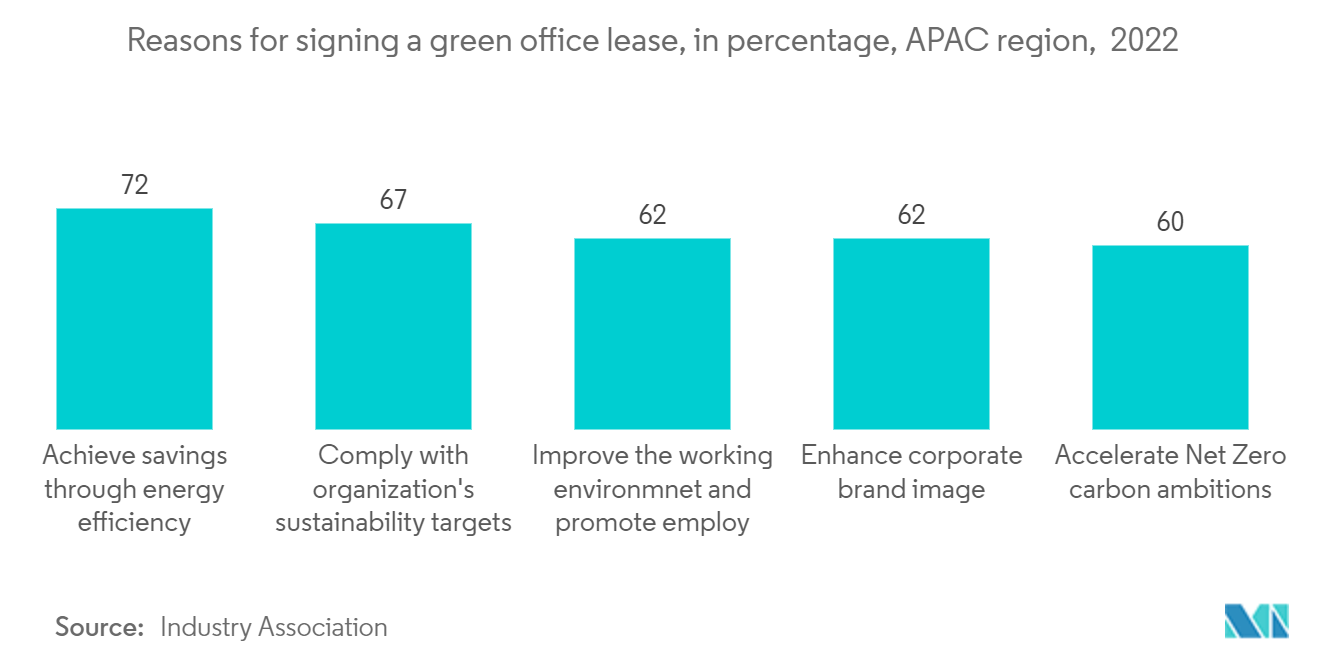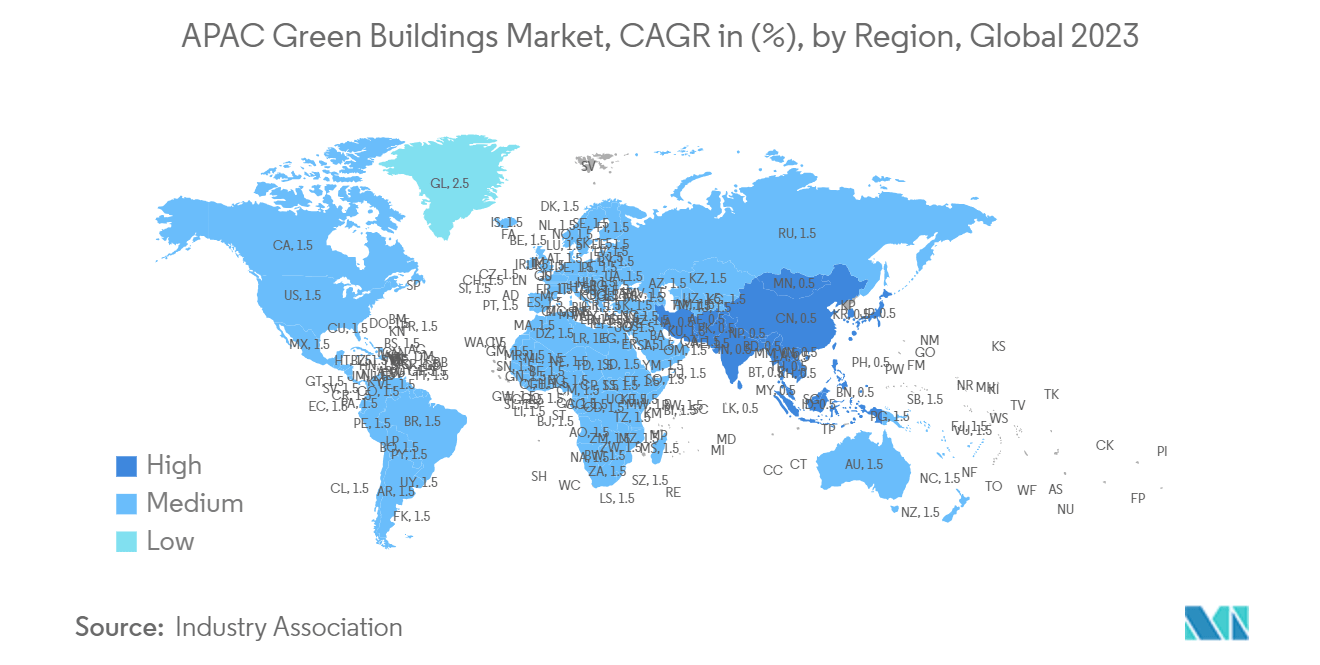Market Trends of APAC Green Buildings Industry
The Commercial Segment’s Increasing Demand for Green Buildings
According to the report, green certifications for buildings have increased five-fold since 2010, reflecting the growing awareness of green certifications amongst developers and occupiers alike.
There are regional variations in green certifications as well. For example, in Q3 2023, it was found that Bengaluru had the highest percentage of green-certified buildings, followed by Hyderabad and Chennai, with nearly three out of every five certified assets.
India had approximately 691 million square feet of Grade A office stock in Q3 2023, of which 61% have at least one Green Certification.
Retrofitting skills will be a key part of the transformation of the sector. With over half of the region’s premium office space having been built before 2011, there’s plenty of scope to modify existing buildings or retrofit them.
For example, refurbishing existing buildings sustainably to improve their efficiency – known as green retrofitting – could be a great way to improve the performance of existing buildings, helping to reduce energy consumption and carbon emissions.
APAC cities are facing a shortage of sustainable office buildings. Hong Kong’s demand for high-quality, green office space is expected to reach its highest level in two years, resulting in a significant supply shortage. A shortage of 84% of low-carbon office space in Sydney by 2028 is expected. This imbalance between demand and supply is hindering the decarbonization of the sector.

India is Dominating the Market
The construction of green buildings is now common in most of the region due to its various advantages, such as lower energy consumption and lower maintenance and operating costs. Governments, especially in developing countries, are introducing new initiatives and policies to promote green construction.
With the rapid growth of commercialization, industrialization, and urbanization in developing countries, the green building industry has lucrative opportunities. According to the IFC, green buildings can be viewed as a key low-carbon and sustainable investment opportunity in developing countries.
Southeast Asia’s leading companies are setting science-driven goals and working together across value chains to create a green economy for the future. Bilateral agreements and new infrastructure are laying the groundwork for global and regional carbon markets, intending to preserve and restore the region’s ecosystems.
With 10 million new homes being built every year, India offers tremendous opportunities for green building development, both in the residential and commercial sectors. Today, more than 40% of India's commercial Grade A office inventory is green-certified, and this percentage is expected to increase to more than 50% over the next decade, in line with global ESG trends. The BRSR framework mandated by the Securities and Exchange Board of India (SEBI) mandates ESG disclosure in order to promote transparency and accountability for sustainable practices.


